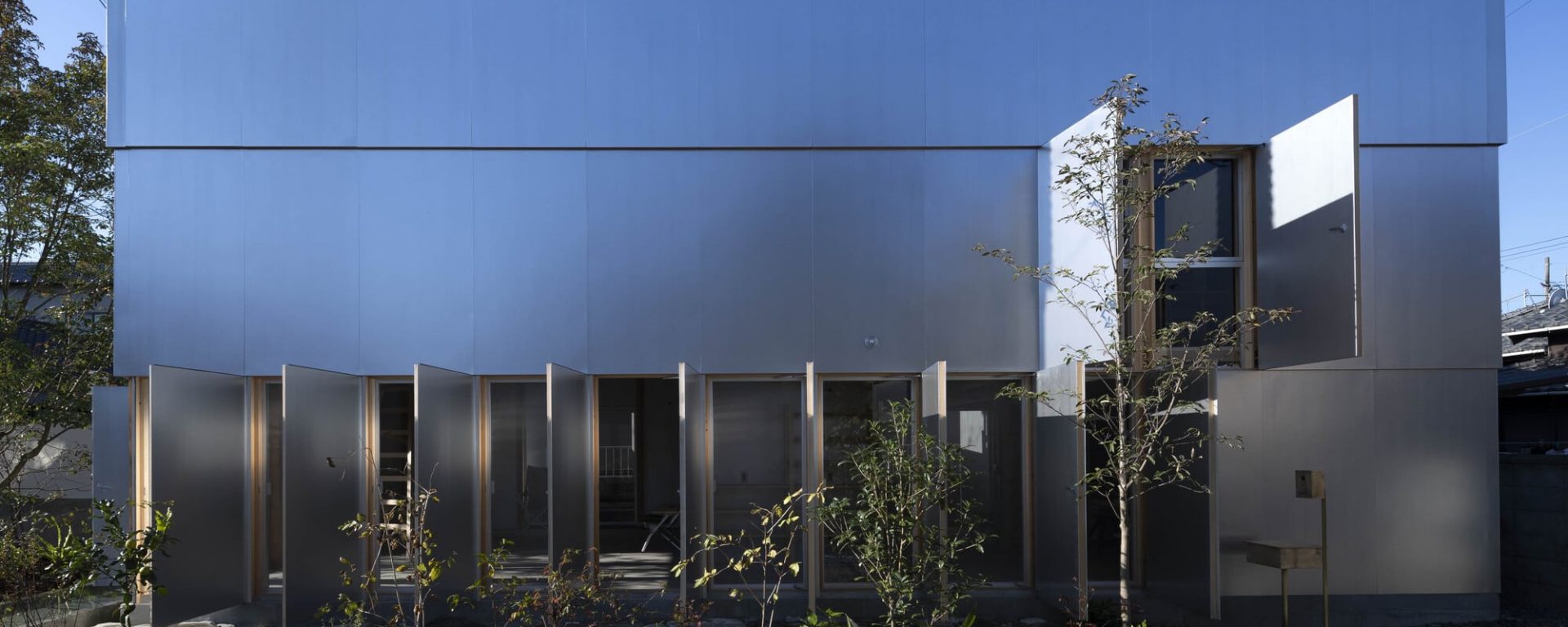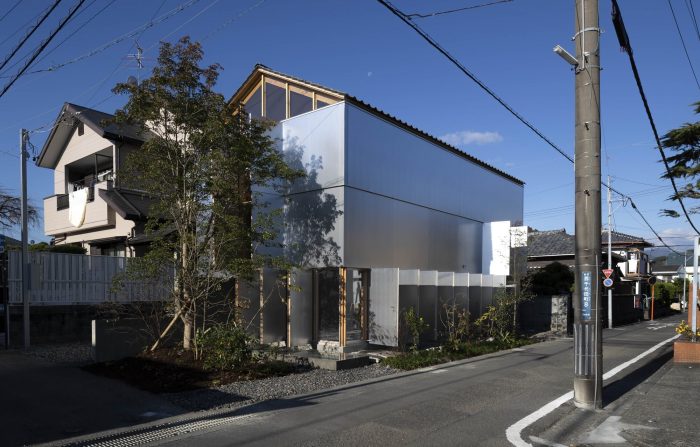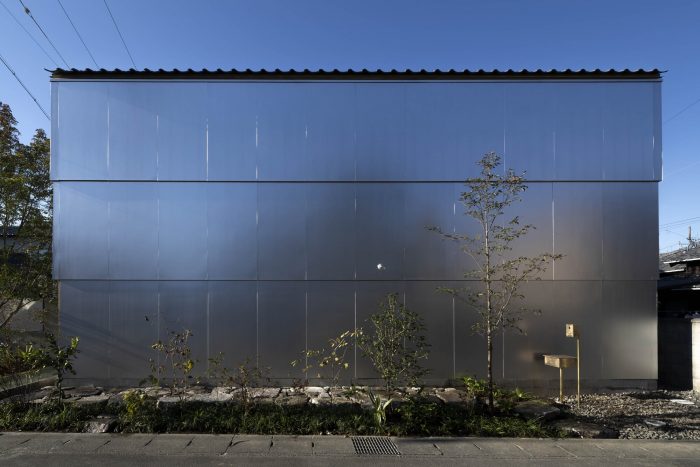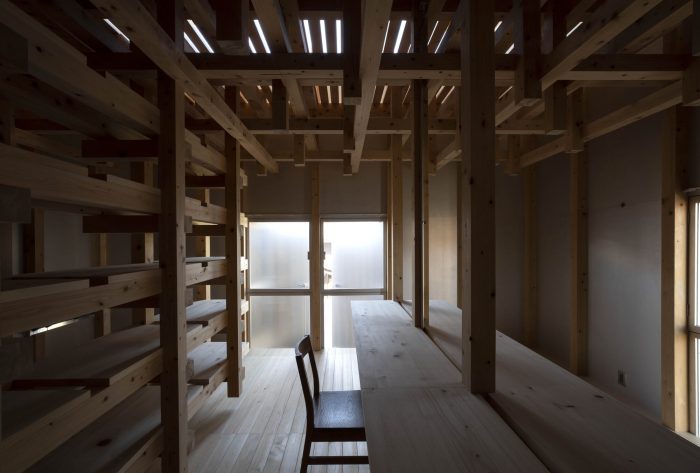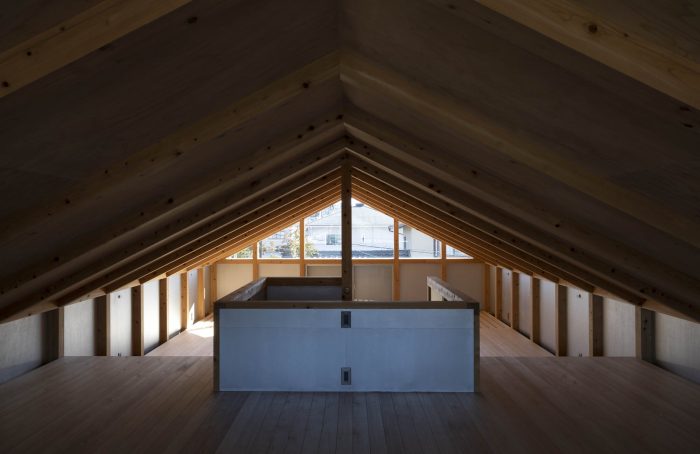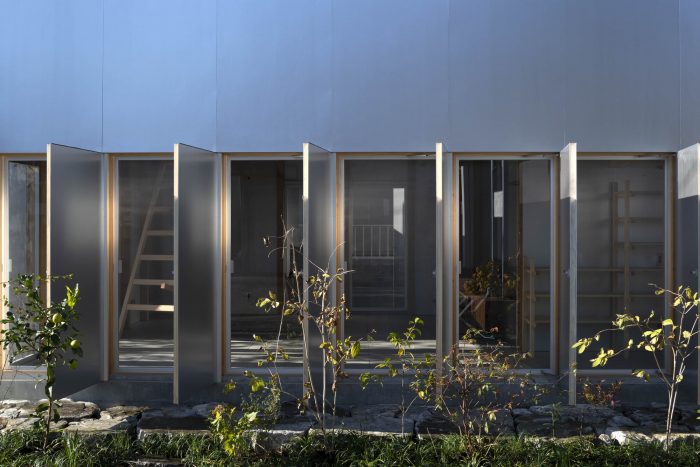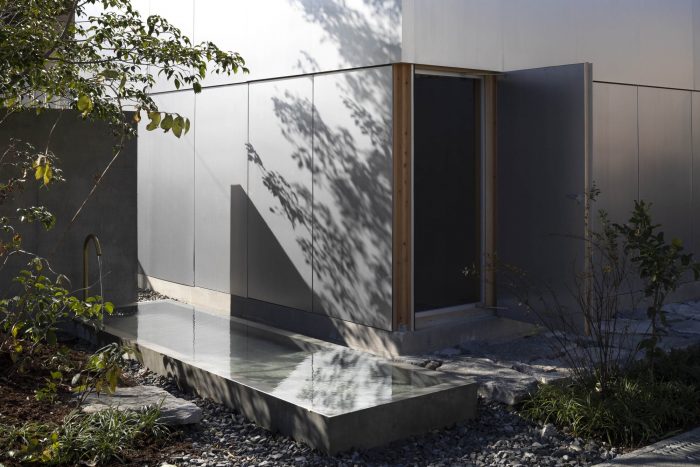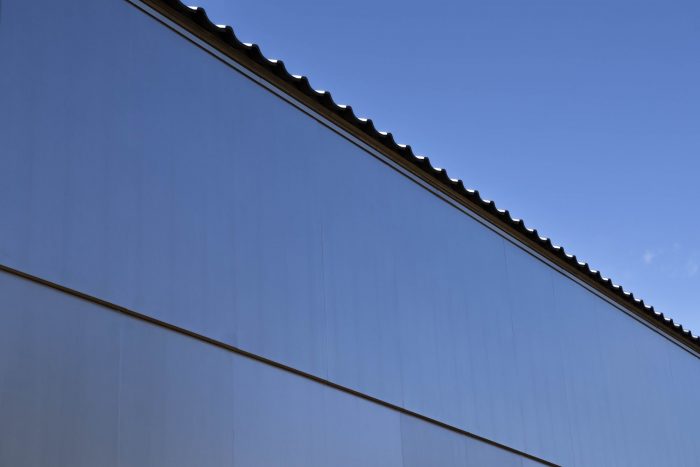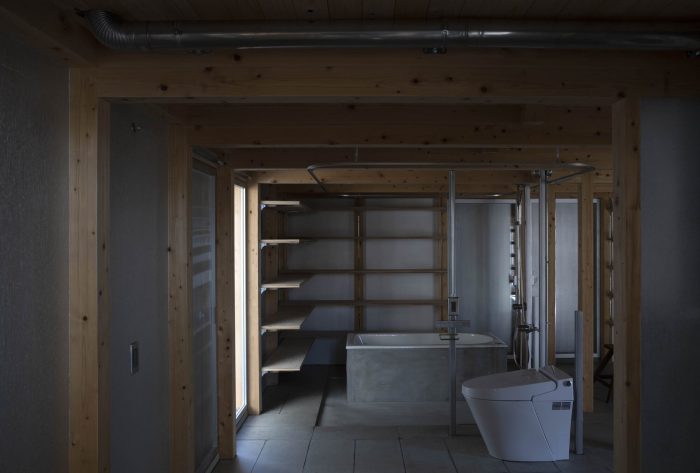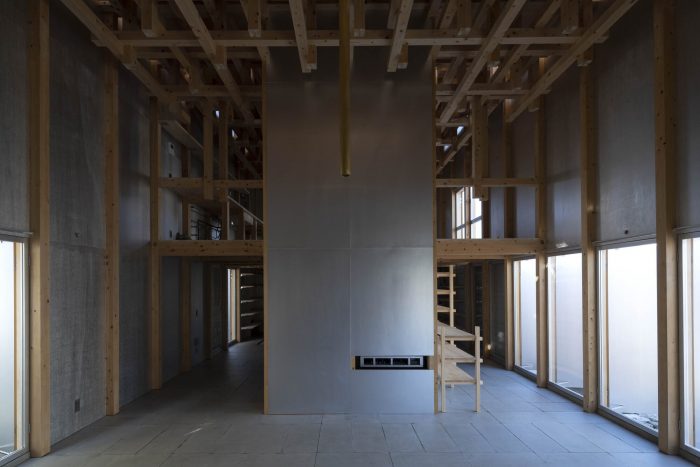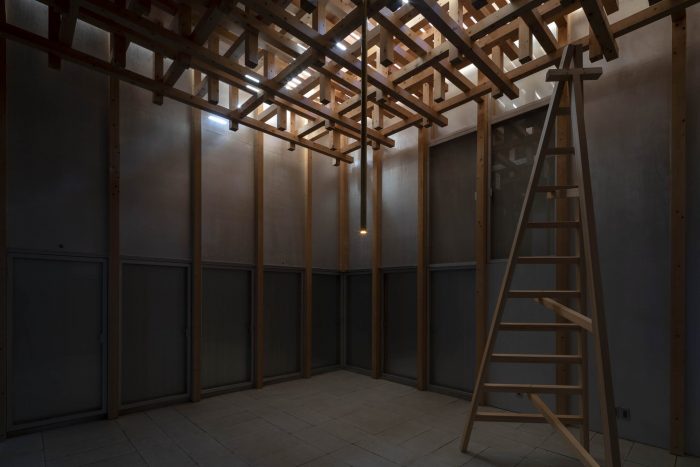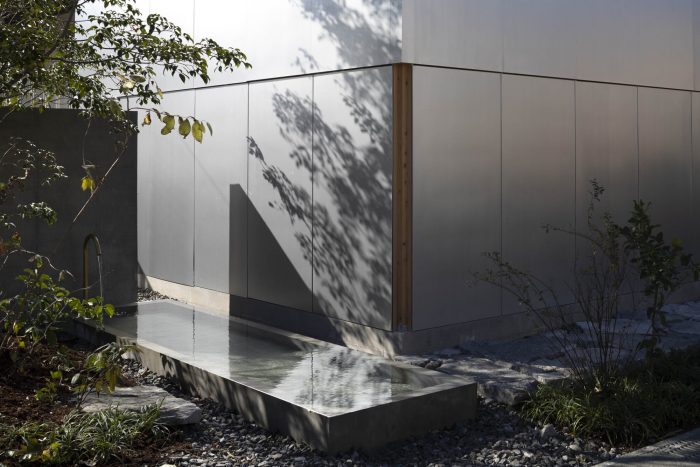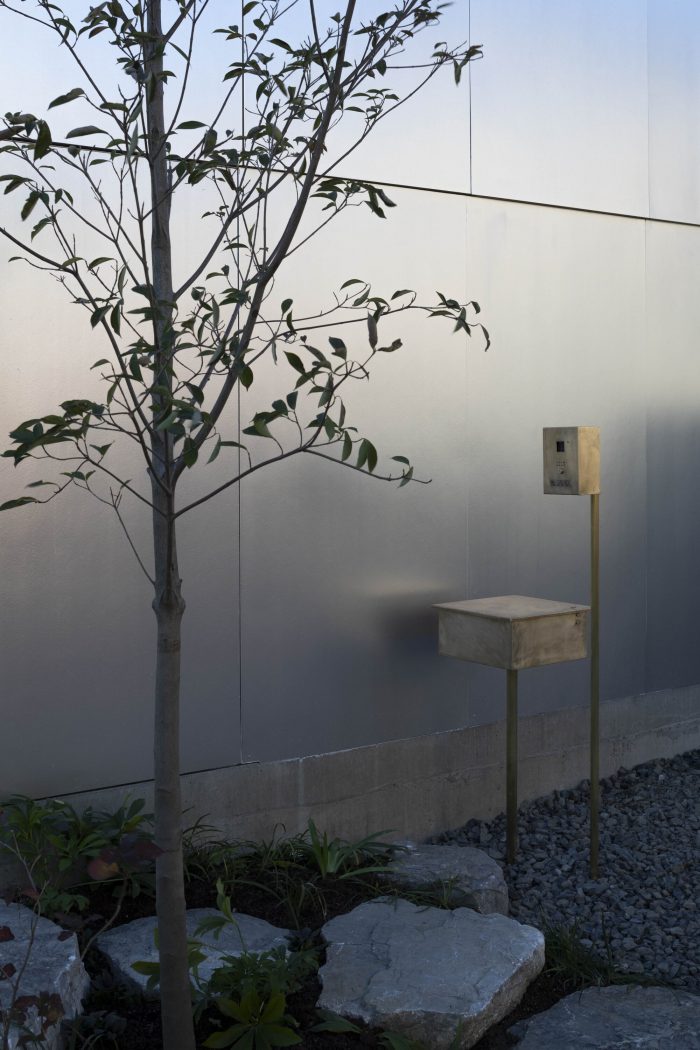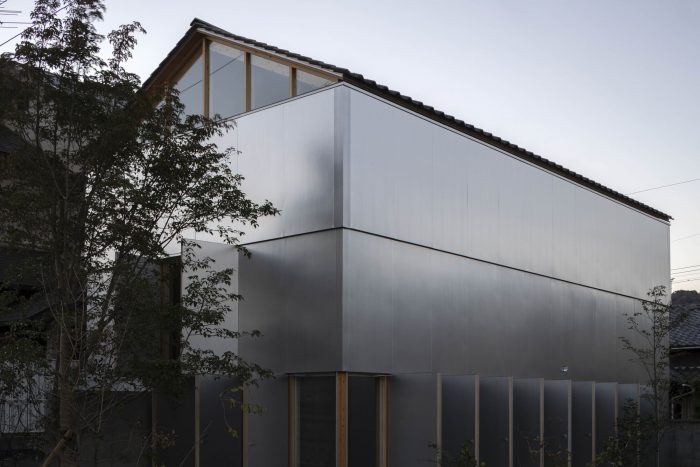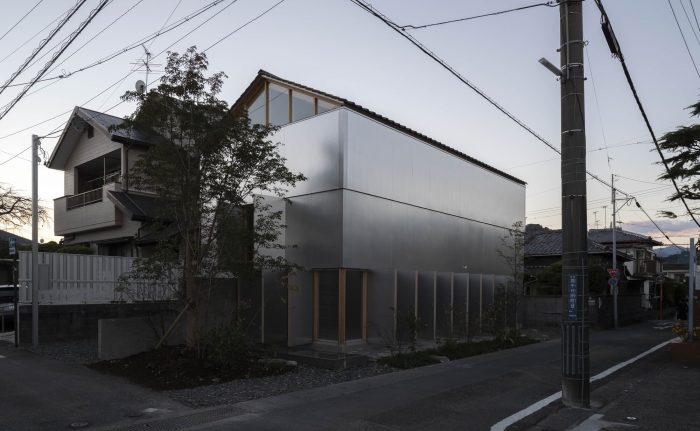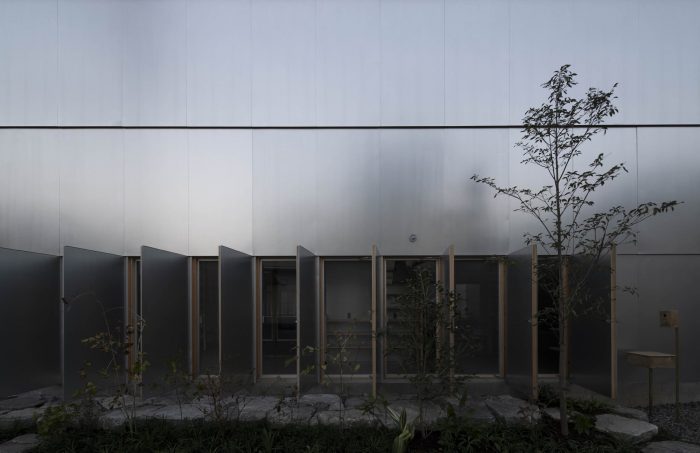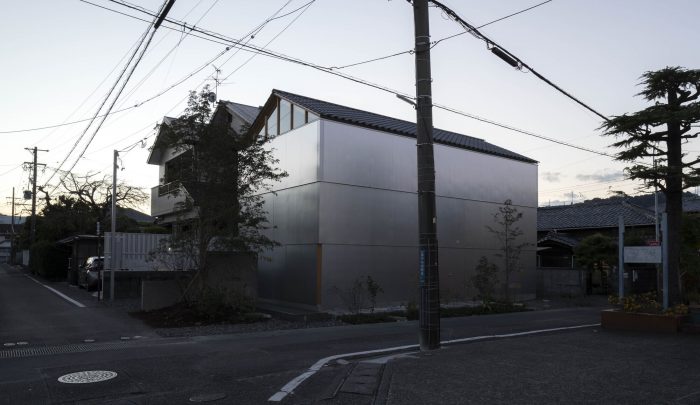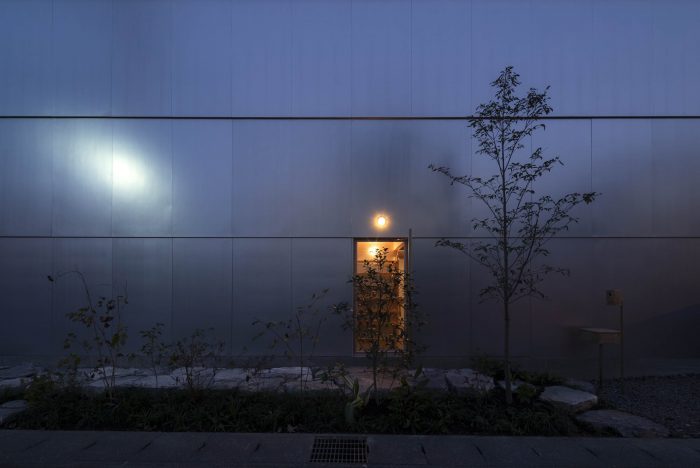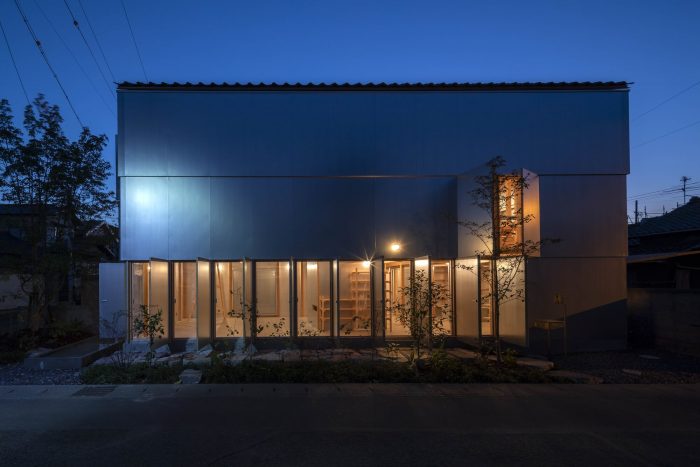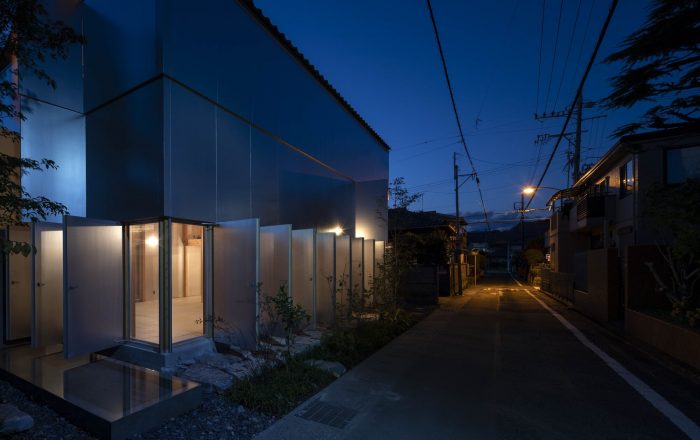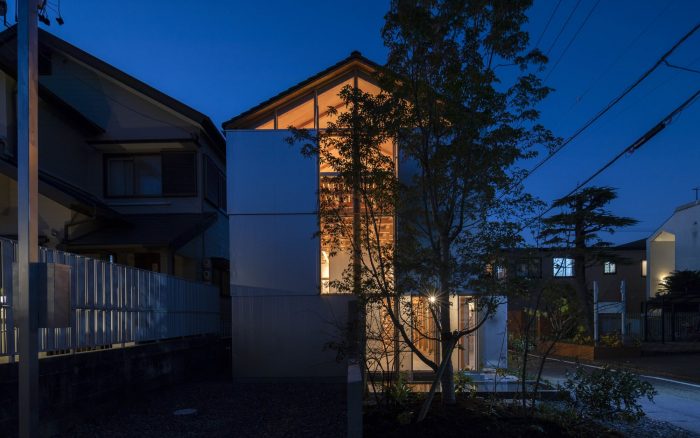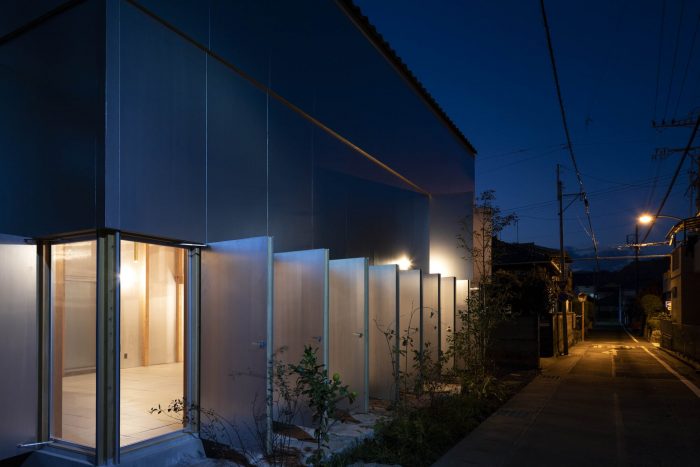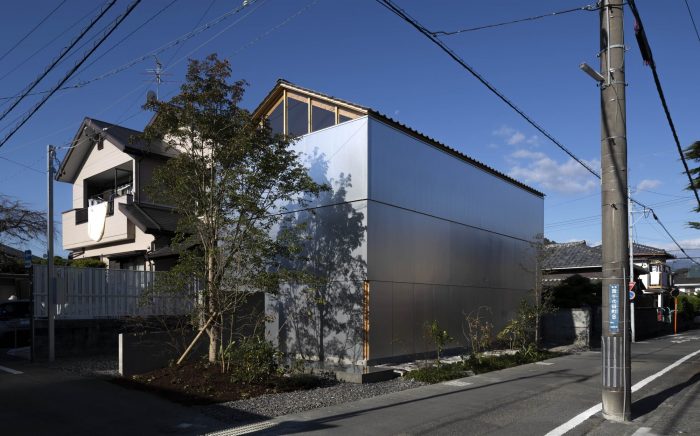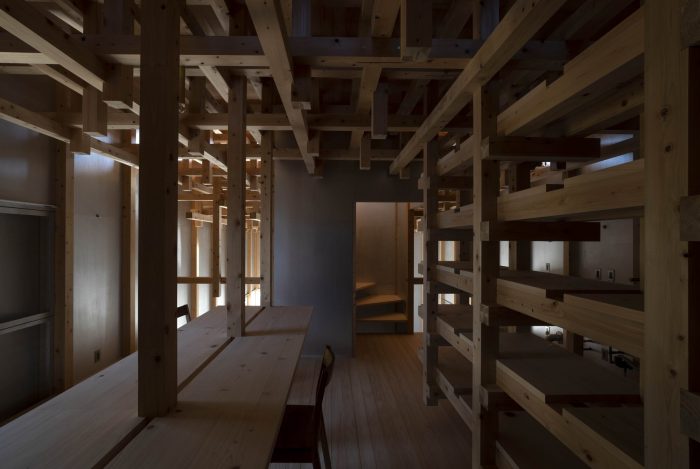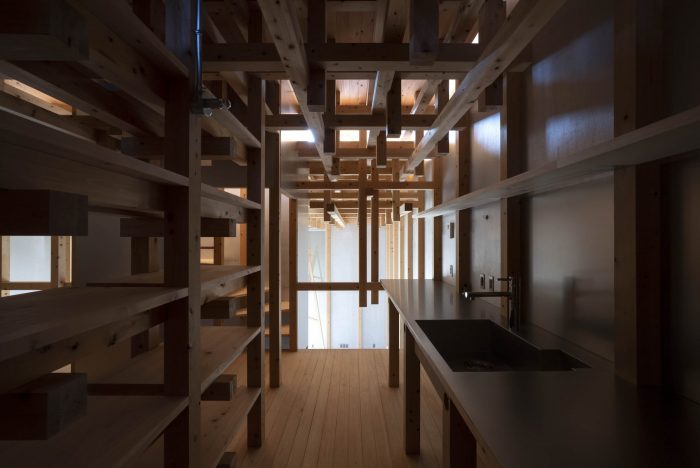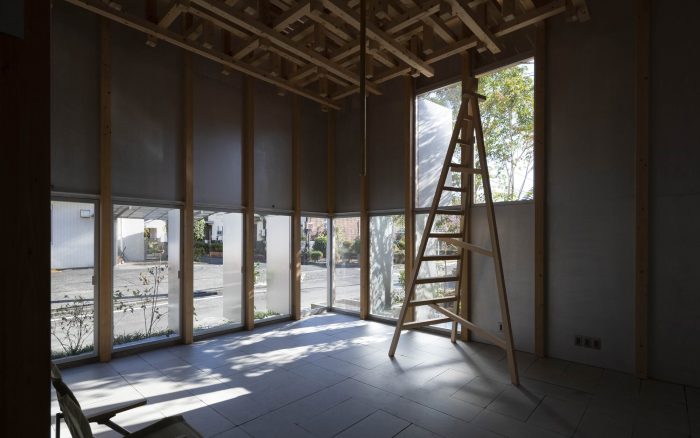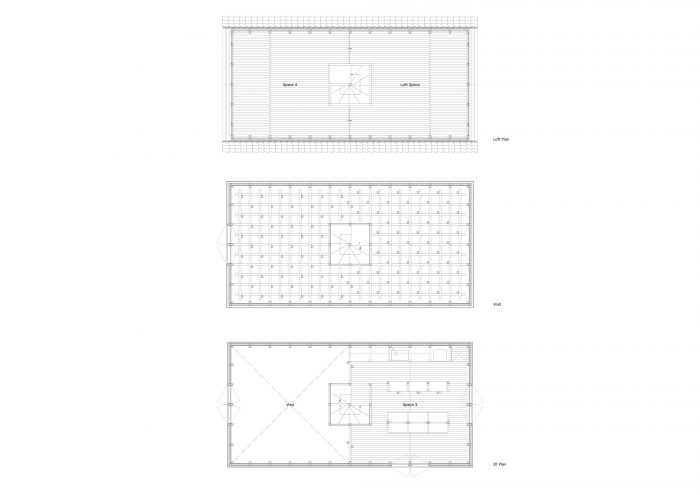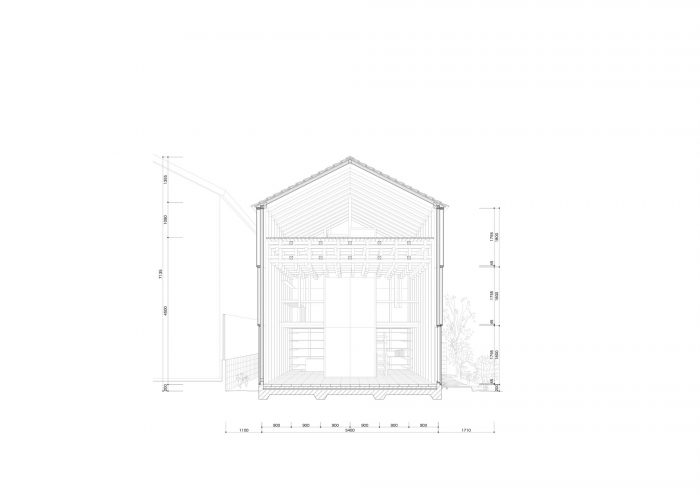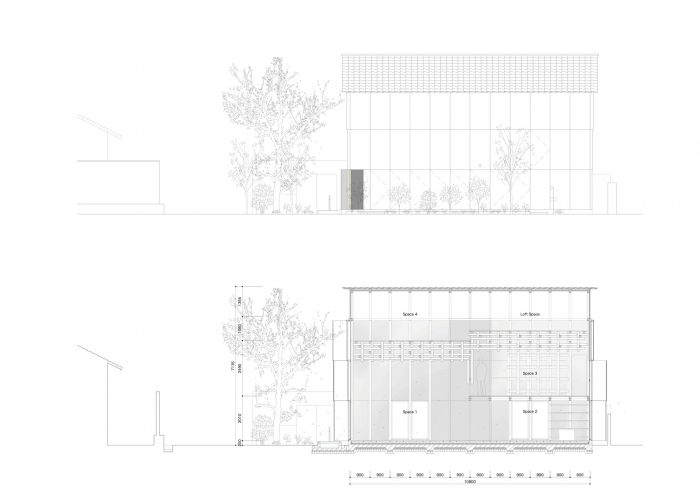该计划是在静冈市中心通往Sunpu城堡的地区的住宅区内建造一个私人住宅。一条在建造城堡时用来运输材料的小溪在附近流淌,留下了蛙鸣的乡间。在尊重传统日本住宅的前提下,我们试图通过从开放性和深度出发,更新风格和传统,在未来建造日本住宅而不陷入怀旧。
The plan is to build a private residence in a residential area in the district leading to Sunpu Castle in the center of Shizuoka City. A stream used to transport materials when the castle was built flows nearby, leaving the countryside where the frog crow. With the respect to traditional Japanese houses, we are trying to build Japanese houses in the future without falling into nostalgia by renewing styles and traditions starting from openness and depth.
柱子被竖立在3×6角的外围表面,间距为900毫米,并被绑成屋檐的形状。扁平的格子梁以1800毫米的间距组装,通过向左和向右移动900毫米来堆叠,形成一个梁架。所有的材料都是90毫米见方的桧木材料,成本合理化。通过将支柱材料捆绑在一起,清除了细长的比例,同时提供了一个隔热层。通过这种方式,在以楼梯为中心的工作室里创造了包括土层在内的四个楼层,框架成为一个骨架,像云一样漂浮在建筑内部。
Pillars are erected on the outer peripheral surface of a 3 x 6 angle at a pitch of 900 mm and tied in the shape of a gable roof. Flat lattice beams assembled at a pitch of 1,800 mm are stacked by shifting 900 mm to the left and right to create a beam frame. All of the materials are 90mm square hinoki materials, and the cost is rationalized. By tying the pillar materials together, the slender ratio is cleared while providing a heat-insulating layer. In this way, four floors including the dirt floor are created in the studio centered on the staircase, and the frame becomes a skeleton that floats like a cloud inside the building.
以3×6板为基础的三层墙充当了排水口和窗户,阶梯状的阴影勾勒出外部的轮廓。当墙体关闭时,路过的人、摇曳的植物、脸盆等都会反射到银色的外墙上并浮现出来,模糊了房子的存在。在内部,楼梯将每层楼的地板垂直连接起来,一束穿过框架的小光照亮了土炕。
The three-layered wall, which is based on a 3×6 board, acts as a drain and a window, and the stepped shadows outline the exterior. When the wall is closed, people passing by, swaying plants, basins, etc. are reflected on the silver outer wall and emerge, blurring the existence of the house. Inside, the staircase connects the floors of each floor vertically, and a small light passing through the frame illuminates the dirt floor.
当你打开一堵墙时,外面出现了一个像黑洞一样的东西,一束锐利的光线照耀着里面。当所有的墙都被打开时,泥土地面与城市连成一体,从盆地反射的光线在上部结构中闪闪发光。通过打开和关闭墙壁,从里面和外面可以看到的东西就会被切换。通过重复这样的方式,这间代表墙后不可见的房子,就像某处的寺庙。就像一个和尚在早上和晚上打开和关闭配件来改变这个区域一样,每天的小活动创造了一个街角和一个生活。
When you open a wall, something like a dark hole appears on the outside, and a sharp ray of light shines inside. When all the walls are opened, the dirt floor is continuous with the city, and the light reflected from the basin shimmers in the upper structure. By opening and closing the wall, what can be seen from inside and outside is switched. By repeating this, this house, which represents the invisible behind the wall, is like a temple somewhere. Just as a monk opens and closes fittings in the morning and evening to change the area, daily small activities create a street corner and a living.
Architects: Seiichi Yamada and Associates
Area : 116 m²
Year : 2021
Photographs :Akinobu Kawabe
Structural Engineer : Syunya Takahashi Structural Building Research Institute, Syunya Takahashi
Construction : Kuwataka Construction, Hiroki Kuwataka
Furniture : iinumakatsuki furniture Mfg.
City : Shizuoka
Country : Japan

